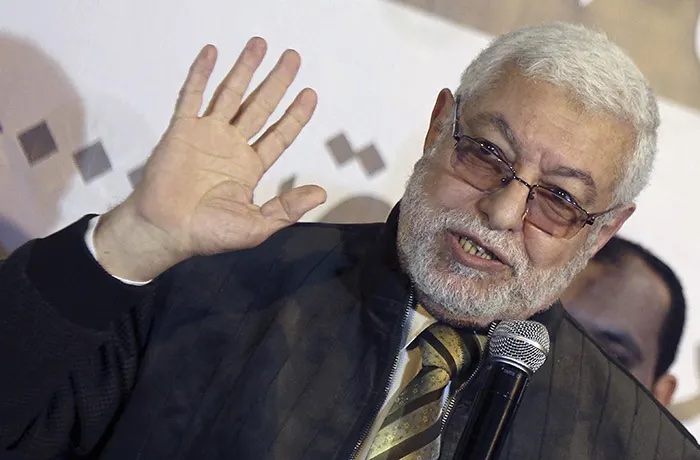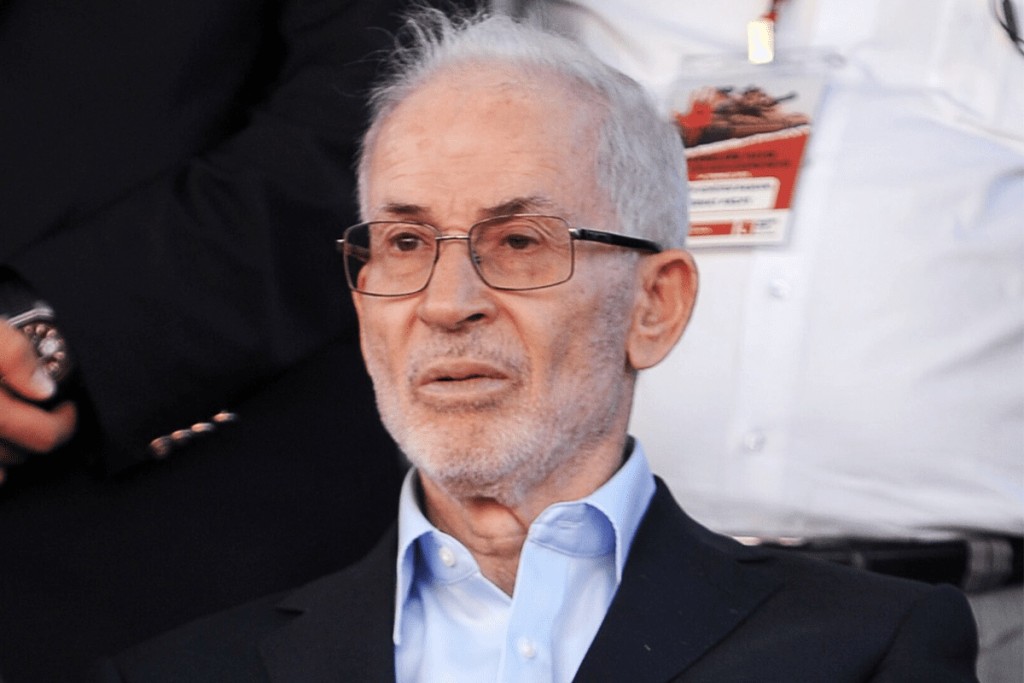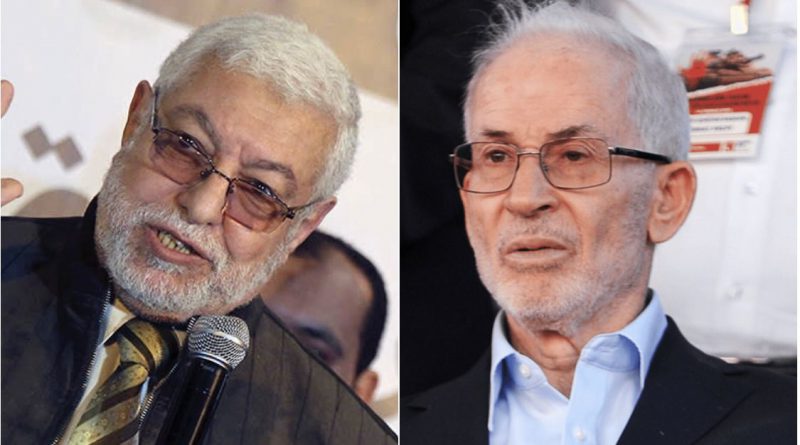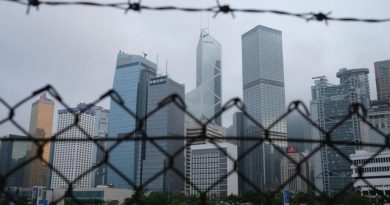Muslim Brotherhood’s internal conflict of ‘War of Documents’
Munir’s document is carried through in a conciliatory tone, while the Change Front’s document is loudly voicing a jihadist revolutionary approach.
The “war of documents” is the theme defining the latest episode of the internal conflicts within the Muslim Brotherhood group. In mid-October, the London-based front, under the leadership of Deputy Supreme Guide Ibrahim Munir, published a “Political Document” to forestall the announcement of the Change Front’s document. The Change Front is a jihadist youth faction inside the Muslim Brotherhood that introduces itself as an alternative to the fighting elders.
Jihadists and Politicians
The conflict between the group’s leaders reached a peak last year when the standoff between the Istanbul-based Mahmoud Hussein front and the London-based Ibrahim Munir’s front escalated from randomly throwing media statements at each other to exchanging serious accusations of administrative and financial corruption. The leaders’ rivalry pushed the century-old group to the edge of a cliff, especially as it coincided with a sharp decline in funding and popular base support.
Amidst leadership conflicts, the Muslim Brotherhood’s younger members, who have been working under the umbrella of Hussein’s front in Istanbul for seven years, decided to use the momentum of polarization and division inside the group to ascend as the new leaders. They have been active since 2015 under the title of “Kamalists.” In late 2020, they changed their title to the Change Front, ran internal elections, and designed their own bylaws separate from the rules set by the group’s leadership.
The Kamalists are a group of Muslim Brotherhood youth, who were trained by Mohamed Kamal, one of the most prominent mid-level leaders of the Egyptian Muslim Brotherhood. Between 2013 and 2014, Kamal organized several violent attacks on civilians and state facilities in Egypt in order to avenge the ouster of the Muslim Brotherhood regime from power. He used the anger of the group’s youth to fuel those attacks. His goal was to cause extreme chaos that would force the military to return the Muslim Brotherhood regime back to power.
After Kamal was killed in a clash with the Egyptian police forces in late 2014, his affiliated youth groups went on to form their own militias. The most famous of these militias are HASM and Liwa Al-Thawra, which are designated as foreign terrorist organizations in the United States. HASM leaders fled to Turkey in early 2015. From there, they continued to command operations using the younger Muslim Brotherhood members who could not leave the country. Senior state officials and police and military personnel were the main targets of HASM-led operations. Their biggest crime was the assassination of the Egyptian Attorney General, Hisham Barakat, in June 2015.
Two of the HASM leaders spoke at the Change Front’s conference which was held in Istanbul earlier this month. They endorsed the Change Front document and asserted the importance of “waging jihad against the Egyptian state.” The Egyptian people and leadership watched the scene with much disappointment in Turkey’s leadership, which previously promised to limit the Muslim Brotherhood activities on Turkish land as part of a political rapprochement with Egypt. The Turkish state has previously declined to extradite the Muslim Brotherhood members living in Turkey to the Egyptian authorities. The Egyptian judiciary has already charged most of them with committing acts of terrorism. HASM leaders are at the top of the list. The reappearance of HASM in Istanbul openly inciting violence against the Egyptian state will most likely harm the already slow reconciliation process between Cairo and Ankara.

The Rebellion
The so-called ‘Change Document’ carried the logo of the Muslim Brotherhood and was introduced in the name of the group’s General Office. In the lengthy document, the Change Front leaders, took the liberty to speak in the name of the Muslim Brotherhood, the Egyptian people, and even the Egyptian Arab Spring revolution. They tried to introduce their vision, which mostly revolves around the concept of violent jihad, as the best solution to the ongoing leadership crisis in the group, as well as the ongoing economic crisis in Egypt. They clearly called for a revolution against the existing ruling regime in Egypt.
The Change Document started by reviewing the mistakes committed by the Muslim Brotherhood leaders during the recent political stages through which the group has gone, extending from “the revolution and the [Muslim Brotherhood’s] state ruling phase, as well as the mistakes committed by the group’s allies and competitors, in the context of the Egyptian revolution.” The purpose of this review, as the document explains, is to build a new vision to liberate the Egyptian people from the grip of what they call a “military capitalist” system. The vision, however, is set to be implemented by “establishing a system of governance that is compliant with Islamic Sharia.”
Later in the document, one may not be surprised to see that the Muslim Brotherhood’s Change Front is playing with terminology to falsely hide their self-centered goals in the details of the bigger picture of Egypt’s political scene. When they speak about “freeing Egyptians,” they actually mean releasing the detainees of the Muslim Brotherhood from prisons by applying force on the existing regime. In their new guiding document, the Change Front describes the Muslim Brotherhood prisoners as “hostages to the military authority in Egypt.” They claim that the successor military-led regime that ruled Egypt detained the members of the Muslim Brotherhood “to protect their rule and bury any expected revolutionary spark against them.”
In what seems to be direct permission to the group’s prisoners to manipulate the Egyptian authorities, the document encouraged them to do whatever they think is necessary to convince the Egyptian authorities to release them. That includes, for example, lying about their willingness to renounce their ideological beliefs and disown the Muslim Brotherhood. This tactic has been used by several extremist groups in the past to deceive the authorities and leave prison.
“The detainees are the masters of their own minds when it comes to dealing with the military authority… Every prisoner has the right to choose his strategy to obtain freedom,” stressed the document after declaring that the Change Front, which assigned itself as the new leading power of the group, will not force the Muslim Brotherhood prisoners to abide by collective decisions.
Nonetheless, the document asserted that individual attempts of the prisoners should happen in parallel with applying external pressure on the Egyptian leadership to force the release of the Muslim Brotherhood prisoners. “The authoritarian regimes throughout history do not release political detainees voluntarily except under real pressure exerted by the forces of change and liberation movements,” emphasized the document. “The military regime in Egypt will not resolve the political detainees’ crisis unless a revolution applies pressure on it to do so.”
Ironically, the Muslim Brotherhood’s Change Movement is introducing itself as the master of this prospective revolution and the one who will take Egypt’s leadership after it happens. They even proposed a “social contract” between the citizens and their prospective Sharia rule. With utter illogical contradiction, the so-called social contract speaks about empowering civil society, fighting corruption, and encouraging co-existence and freedom of speech.
Most of the principles of this so-called social contract are playing on the soaring strings of the current economic crisis in Egypt, by focusing on redefining the economic relationship between the state, the military institutions, and the private sector businesses. The Muslim Brotherhood’s contract claimed to be, “guaranteeing economic competitiveness, increasing the national productivity and sources of income, eliminating poverty, and encouraging the peaceful transfer of political power.”
The fun part, though, is what the document describes as the methodology by which the Muslim Brotherhood’s Change Front is going to implement its plan of mobilizing the public to start a revolution that brings the Muslim Brotherhood back into power. They said that they will free themselves from the centrist approach that led to the failure of the group’s rule in 2013. They insist on practicing political activism “within the general framework of national concerns,” by discretely infiltrating into other political factions whose interests intersect with theirs.
“We will allow the Muslim Brotherhood members, youth, specialists, and scholars to engage in political activism through working under different [Egyptian] political parties and movements that correspond to our vision of national renaissance,” the document noted. That seems like permission to the youth of the Muslim Brotherhood who still live in Egypt to start joining liberal and leftist political parties and movements to revive the social power of the group among grassroots citizens the same way the previous generation of the Muslim Brotherhood did in the late 1990s and early 2000s, under the Mubarak regime.

The Reconciliation
In clear contrast to the Change Front’s rebellious approach, the Ibrahim Munir front in London seeks reconciliation with the Egyptian people and the military institutions. On more than one occasion, Munir confirmed that he and his followers are giving up on political competition for power in Egypt. “We completely reject violence and we consider it outside the ideology of the Muslim Brotherhood – not only the use of violence and arms but to have a struggle for power in Egypt in any form,” Munir told Reuters in an interview in July. “We reject the struggle for power even if between political parties through elections organized by the state. This is rejected by us.”
On the eve of the Change Front’s conference, Munir’s front allowed affiliated news sites to publish a “Political Document” that was internally distributed in mid-September. The Political Document echoes Munir’s press statements about the group’s desire to reconcile with the Egyptians and return to practicing social, rather than political, activities inside Egypt. The document avowed that “seeking power is not anymore one of the group’s goals.” Similar to the Change Front’s document, Munir’s document is implicitly assuming that the current Egyptian state is about to collapse amidst the current economic crisis in Egypt. It thus introduces the group’s vision of what the Muslim Brotherhood will do when this happens.
Munir’s document sets three political priorities for the Muslim Brotherhood, regarding its work in Egypt, in the coming period, which the document describes as a “critical moment in Egypt’s history.” These priorities are, “closing the political detainees’ file, reaching societal reconciliation, and building a broad partnership with national factions that responds to the demands of the public, in terms of achieving political and economic reform.” The document asserted that realizing these priorities requires the Muslim Brotherhood to “overcome the power struggle in a political environment dominated by polarization and incitement, and in a society facing the specter of division.”
The Political Document also emphasized the group’s need for national collaboration with other active political and social groups, similar to what the Change Document noted. However, Munir’s front sees this political collaboration as a means to “contribute to saving the nation” through working with a “national coalition, that excludes no one, to achieve the ‘Bread, Freedom, Social Justice, and Human Dignity’ [which was the main slogan chanted in 2011 revolution].”
Munir’s document also highlighted the need for reforming the governance system, ending corruption, and guaranteeing freedom of expression and freedom of belief to all Egyptians. That carries a direct message to the Egyptian Coptic Christian citizens, who were among the socio-political groups that most vigorously opposed the Muslim Brotherhood rule in Egypt in 2013. “We are responsible, along with other national partners, to exert the necessary effort to build a national consensus that befits the sacrifices of the Egyptians,” Munir’s document asserted. “This inclusive partnership will happen through full democratic practice, which sincerely embraces the Egyptian national fabric, Muslims, Christians, Islamists, liberals, and leftists. Men and women, old and young, labor and businessmen, educated and illiterate.”

The Power of Words
Guiding documents have always been the main tool of communication between the Muslim Brotherhood leadership, younger affiliates, and supporting bases. They have always been kept for the internal use of the members, as they are usually loaded with instructions and plans about how the group should behave in a specific political context at a specific timeframe. The guiding documents were written by the group’s founding father Hasan Al-Bana in response to political and social issues, and had been used to set the group’s constitution which the Muslim Brotherhood members still follow up to this day.
During and after the Arab Spring revolutions, which witnessed a quick rise and fall of the Muslim Brotherhood as a powerful political actor, the group’s leadership used the guiding documents on a broader scale to communicate with the general public in the countries in which they operate. That was very clear in the examples of Arab Spring countries Egypt, Tunisia, and Syria. The documents released recently by the conflicting fronts of the Muslim Brotherhood leadership are not only directed to the members of the group. They carry political messages to the Egyptian people, political parties, and the Egyptian state leadership.
The Political Document and the Change Document are almost identical in terms of the goals and the priorities that they suggest. Yet, Munir’s document is carried through in a conciliatory tone, while the Change Front’s document is loudly voicing a jihadist revolutionary approach. Munir’s document is mainly addressing the Egyptian people from a political perspective, which they believe is likely to be accepted among the Egyptian grassroots citizens who previously rejected the Muslim Brotherhood’s rule in 2013. In contrast, the revolutionary approach of the Change Front’s document is mainly talking to the young members of the group who still live in Egypt. Most of the Muslim Brotherhood youth have lost confidence in the group’s leadership, especially after the outbreak of conflicts between the leaders scattered between Britain and Turkey.
Each of the two documents proposes a vision for the future of the Muslim Brotherhood’s role in Egypt, in anticipation of the collapse of the current Egyptian state under the escalating economic crisis. There is no real evidence to support the Muslim Brotherhood’s assumption about the Egyptian state’s potential loss of power at any time in the foreseeable future. However, such claims serve as a tool to keep the group’s foreign sponsors interested and popular supporters inside Egypt engaged, even by hanging on the worn rope of false hope.
Article first published on Al-Majalla.



